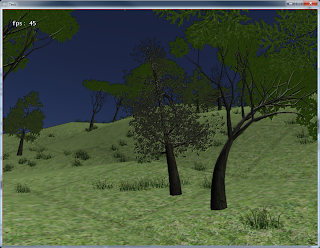Heh. Anyway, previously I'd talked about cascaded shadow maps and how they worked. As I said implementing them was easy as Neil Knight had done most of the hard work. The quality still wasn't quite good enough for the voxel terrain my engine could push. I could easily draw a lot of terrain and have the far clip plane way out, but as it got bigger the quality of the shadows suffered. CSM mostly fixed it, but still left some aliasing mostly due to self-shadowing. Here's a good example from the GPU Gems chapter on the subject:
Another problem with percentage-closer filtering is that it inherits, and indeed exacerbates, the classic nuisances of shadow mapping: "shadow acne" and biasing. The most difficult to solve biasing issues are caused by shadow-map texels that cover large ranges of depths. This scenario often results from polygons that are almost parallel to the light direction, as shown in Figure 8-3.
 |
| This would be Figure 8-3, GPU Gems 3 illustration of shadow mapping artifacts. |







